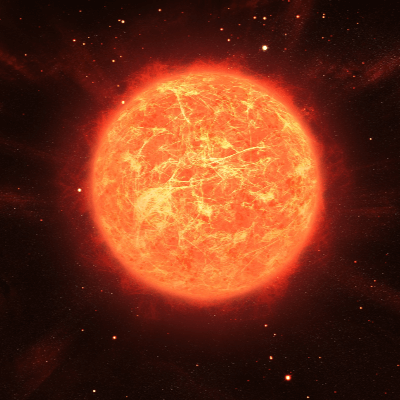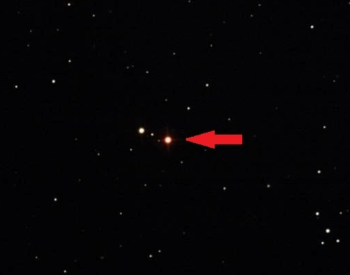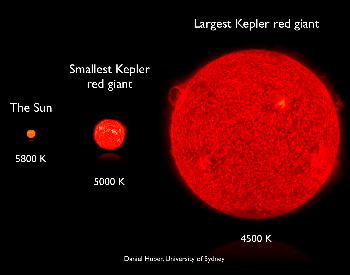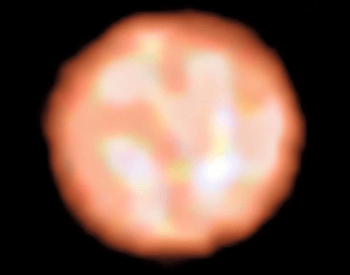
- Common Name: Red Giant
- Type of Star: Giant Star
- Mass: Between 0.3 and 8 solar mass
- First Discovered: Unknown
- Discovered by: Unknown
- Examples: Gacrux and Arcturus
14 Red Giant Star Facts for Kids
- A red giant is a giant star in the late stage of its stellar evolution that has exhausted its supply of hydrogen.
- Red giant stars have a yellow-orange to red appearance.
- A star with a solar mass between 0.3 and 8.0 will evolve into red giant.
- The average surface temperature of a red giant is between 4,000 and 5,800 degrees Fahrenheit.
- The nearest class M red giant star is Cacrux (Gamma Crucis) at 88.6 light-years away.
- The nearest class K red giant star is Arcturus at 36.7 light-years away.
- Aldebaran is an example of a red giant that belongs to the red-giant branch.
- Hamal is an example of a red giant that belongs to the red-clump giants.
- Mira is an example of a red giant that belongs to the asymptotic giant branch.
- One of the biggest red giants ever discovered is VY Canis Majoris, its 3,900 light-years from Earth, over 1,400 times bigger than our sun and over 250,000 times brighter.
- Red giants can have a stable habitable zone for two to three billion years, allowing life to theoretically develop on planets within the habitable zone.
- Red giants that are known to have planets are HD 208527, HD 208527, Gamma Cephei, Iota Draconis and Pollux.
- Our Sun will become a red giant in the next 5 to 6 billion years. At its peak brightness, it will be thousands of times brighter, but the surface temperature will be about 50% cooler than today.
- The fate of Earth is unknown when our Sun becomes a red giant. It could be consumed by the Sun as it starts to expand or due to a weaker gravitational hold, pushing Earth away as it expands.
Red Giant Pictures

A photo of Mira, a pulsating red gaint star.Credit: Art Trevena / BCAS

A comparison of our sun to red giant stars.Credit: University of Sydney

A photo of the red giant star P1 Gruis.Credit: Georgia State University
Additional Resources with Red Giant Star Facts
- Red Giant Star Facts and Information – Discover more about red giant stars on the Space.com website.
- Can Earth Survive its Sun Becoming a Red Giant – Learn what will happen to our planet when the sun becomes a red giant in the far distance future.
- The Inner Workings of Red Giant Stars – Learn about the inner workings of red giant stars on the Sky and Telescope website.
